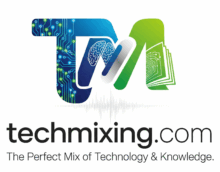Azure Data Factory (ADF) is a cloud-based data integration service provided by Microsoft Azure. It is designed to orchestrate and automate data movement and transformation, enabling seamless data workflows across various systems. ADF is often called a data pipeline platform. It allows the creation of data pipelines. These pipelines move and transform data from diverse sources to desired destinations.
Key Features of Azure Data Factory
- Data Integration:
- Connects to over 90 built-in data sources, including Azure services, on-premises databases, SaaS applications, and cloud storage.
- Supports structured, semi-structured, and unstructured data.
- Data Transformation:
- Offers code-free transformations using Mapping Data Flows.
- Supports custom transformations using Azure Data Lake Analytics, Databricks, HDInsight, or your own code.
- Pipeline Orchestration:
- Manages complex workflows involving data extraction, transformation, and loading (ETL) or extraction, loading, and transformation (ELT).
- Supports conditional triggers, loops, and error handling.
- Scalability:
- Fully managed and elastic, automatically scaling to meet demand.
- Hybrid Data Movement:
- Enables secure data movement across on-premises and cloud environments using the Integration Runtime.
- Monitoring and Management:
- Provides tools for monitoring pipeline performance, debugging, and alerting.
- Includes an interactive monitoring dashboard in the Azure portal.
- Integration with Other Azure Services:
- Works seamlessly with services like Azure Data Lake, Azure Synapse Analytics, Azure Databricks, and Power BI.
Core Components of Azure Data Factory
1. Pipelines:
- A pipeline is a logical grouping of activities that perform a task.
- For example, a pipeline might copy data from one source to another or transform data using a Data Flow.
2. Activities:
- Activities represent a unit of work in a pipeline.
- Types of activities:
- Data movement (e.g., Copy Activity).
- Data transformation (e.g., Data Flow, custom activities).
- Control activities (e.g., If Condition, ForEach, Wait).
3. Datasets:
- Represents data structures (e.g., tables, files) within data stores.
- Specifies input/output data for activities.
4. Linked Services:
- Connection strings and credentials that define how to connect to data sources or destinations.
5. Triggers:
- Define when a pipeline should run.
- Types of triggers:
- Schedule trigger: Based on a specific schedule.
- Event-based trigger: Initiated by events like file arrival.
- Manual trigger: Manually started.
6. Integration Runtime (IR):
- Provides the compute infrastructure for activities.
- Types of IR:
- Azure IR: For cloud-based data movement and transformation.
- Self-hosted IR: For on-premises data integration.
- Azure-SSIS IR: For running SSIS packages in ADF.
Use Cases of Azure Data Factory
- Data Migration:
- Move data between on-premises systems and Azure.
- ETL/ELT Workflows:
- Extract data from multiple sources, transform it using data flows or custom logic, and load it into a data warehouse.
- Big Data Integration:
- Orchestrate big data workflows with services like Azure Databricks and Azure HDInsight.
- Data Synchronization:
- Synchronize data across SaaS applications and storage.
- Hybrid Data Scenarios:
- Integrate on-premises data with cloud systems securely.
Setting Up Azure Data Factory
Step 1: Create an Azure Data Factory Instance
- Go to the Azure portal.
- Search for “Data Factory” in the search bar and click “Create.”
- Provide the required details like name, resource group, and region, then click “Review + Create.”
Step 2: Define Linked Services
- Define connections to your data sources and sinks (e.g., SQL Server, Azure Blob Storage).
Step 3: Create Pipelines
- Use the pipeline editor to add activities.
- Define the data flow, transformation logic, and control flow.
Step 4: Configure Triggers
- Set up triggers for your pipeline (e.g., schedule it to run daily).
Step 5: Monitor and Manage
- Use the monitoring dashboard to view pipeline execution status and logs.
Advantages of Azure Data Factory
- Scalable and Cost-Effective: Pay-as-you-go pricing and scalability to handle massive workloads.
- Code-Free and Flexible: Provides a visual interface for non-coders while allowing custom logic for advanced users.
- Seamless Integration: Connects with various on-premises and cloud-based services.
- Secure and Compliant: Ensures data security and compliance with industry standards.
Limitations of Azure Data Factory
- Learning Curve: May require training for complex workflows.
- Cost Management: Large-scale pipelines can become costly if not optimized.
- Dependency on Azure: Limited direct support for non-Azure cloud services.
Azure Data Factory is essential for modern data engineers. It helps architects enable efficient and automated data integration. It also facilitates transformation workflows for businesses.
Discover more from Technology with Vivek Johari
Subscribe to get the latest posts sent to your email.




